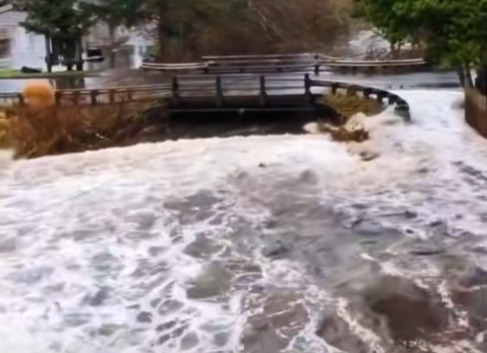On October 26th, Typhoon “Tammy” crossed the South China Sea from east to west. Due to its impact, the Qiongzhou Strait was closed to navigation, hindering transportation to and from Hainan Island. More than 30,000 fishing boats sought shelter in port, and over 50,000 people were evacuated.
Typhoon “Tammy” formed on October 22nd and made landfall in Luzon Island as a strong tropical storm on the 24th. On the 25th, it entered the South China Sea. Meteorological monitoring data indicated that by 12:00 on the 26th, the center of “Tammy” was located about 25 kilometers northeast of Yongxing Island in Sansha City, with maximum winds near the center reaching 12 on the Beaufort scale (33 meters per second).
At 2:40 p.m. on the 26th, the Sansha City Meteorological Observatory upgraded the typhoon orange alert for the Xisha Xunde Islands and Yongle Islands to a red alert. At 3:00 p.m. on the 26th, the typhoon II emergency response for the Xisha Xunde Islands, Yongle Islands, and nearby waters was raised to a level I emergency response.
Affected by Typhoon “Tammy”, tourist attractions such as Wuzhizhou Island Tourism Zone and Xidao Ocean Culture Tourism Zone in Sanya were closed on the 26th. The Haohai New Port, Xiuying Port, and the South Railway Port in Haikou ceased operations from 2:00 p.m. on the 26th and are expected to resume on the morning of the 28th. The Hainan Island high-speed railway and city trains in Haikou were suspended from 6:00 p.m. on the 26th with plans to resume on the 27th at 2:00 p.m.
According to data from the Hainan Provincial Department of Agriculture and Rural Affairs, there are a total of 34,479 fishing boats in Hainan Province, all of which have sought shelter in port. In addition, a total of 52,483 people have been relocated to safer areas.
The China Meteorological Administration predicts that “Tammy” will move westward at a speed of 15-20 kilometers per hour, and from the night of the 27th, it will loop near the southern coastal areas of Hainan Island to the Xisha Islands before gradually weakening in intensity. Based on forecasts, Typhoon “Tammy” will stably move westward before the 27th and then make a 180-degree turn eastward.
Therefore, the Meteorological Administration forecasts that from 8:00 a.m. on the 26th to 8:00 a.m. on the 27th, there will be heavy to torrential rains in parts of southeastern Zhejiang, northeastern Fujian, Hainan Island, the Xisha Islands, and other areas. On the morning of the 26th, Yongxing Island in Sansha City, Hainan experienced heavy storms, causing sea water to backflow onto city streets, a rare phenomenon in the area.
Sea water backflow, also known as saltwater intrusion, refers to the phenomenon of seawater reaching inland through the surface, which can cause brackish water intrusion and threaten the quality of freshwater rivers.
This is not the first occurrence of seawater backflow in recent days. From the evening of October 20th to the afternoon of the 21st, severe seawater backflow occurred in Hebei, Liaoning, Tianjin, Shandong, Jiangsu, and other regions of China, with some coastal towns and ports being surrounded by sea water, with water depths reaching waist-high. According to local residents, such a significant tide has not been seen in thirty years.
It is claimed that this unusually prolonged and intense water level rise, with about 1 meter of abnormal water rise along the Bohai Sea coastline lasting over 20 hours. To date, no similar recorded cases have been found domestically or internationally.
Due to the increasing frequency of “extreme weather events” this year, many netizens are deeply concerned. Comments such as “How many typhoons has Hainan experienced this year?” and “It feels so dangerous, the Three Sands Islands are almost at sea level,” reflect the unease. Discussions also revolve around the phenomena of seawater backflow and potential coastal inundation in the coming years.

